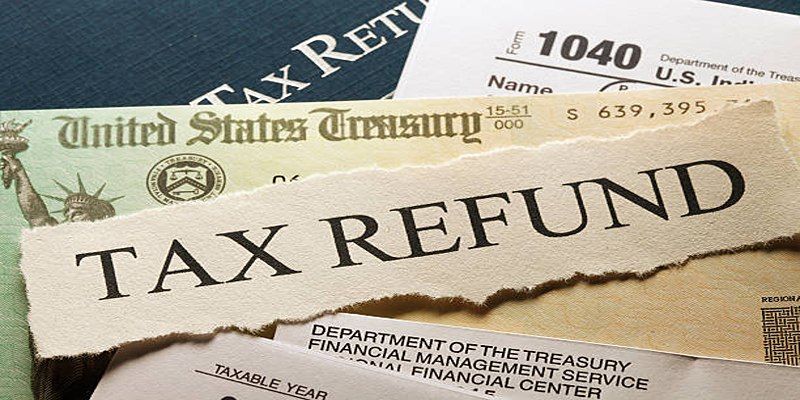Sales taxes play a key role in your shopping and budgeting decisions, varying widely across the U.S. This blog reveals the states with the highest and lowest sales tax rates, explaining how these taxes work and why they differ. Discover how sales taxes impact where you shop or live, and get practical tips to navigate these variations and save more on your purchases.
Understanding Sales Taxes

Sales tax is a consumption tax imposed by states and local jurisdictions on the sale of goods and (in some cases) services. Businesses collect these taxes at the point of sale and pass them on to the state.
Key Components of Sales Taxes
- State Tax Rates: Every state with sales tax sets its own baseline rate.
- Local Add-ons: Some cities and counties also set additional rates, creating a combined sales tax.
- Tax-Exempt Items: Certain states exempt essential items such as groceries, prescription medication, or clothing.
The States With the Highest Sales Taxes
1. Tennessee (9.55% average combined rate)
Tennessee has one of the highest sales tax rates in the country, with a 7% state tax and local taxes bringing the average to 9.55%. While this makes shopping more expensive, the lack of a state income tax helps balance the burden for many residents. For Tennesseans, the trade-off between higher sales tax and no income tax often makes it easier to manage overall tax obligations.
2. Louisiana (9.55% average combined rate)
Louisiana, tied with Tennessee, has one of the highest combined sales tax rates in the U.S. The state’s base rate is 4.45%, but local taxes can drive the total much higher, creating one of the steepest tax burdens nationwide. This variability in local rates often poses a budgeting challenge for residents, who struggle to predict their overall tax expenses. Managing finances becomes even tougher with such inconsistent and elevated tax structures.
3. Arkansas (9.47% average combined rate)
Arkansas residents face an average sales tax rate of 9.47%, combining a 6.5% state rate with additional local levies. This tax revenue plays a crucial role in funding education and infrastructure across the state. However, the costs can rise quickly, especially for those making large purchases. Understanding these rates is essential for budgeting and planning, helping residents better manage expenses while contributing to the state’s development.
4. Washington (9.29% average combined rate)
Washington’s absence of an income tax means the state relies heavily on sales tax revenue. With a state rate of 6.5%, combined with additional local taxes, shoppers face an average sales tax burden of 9.29%. This makes Washington one of the states with the highest sales tax in the nation, impacting the cost of goods and services for residents and visitors alike. The reliance on sales tax highlights the unique structure of Washington's tax system.
5. Alabama (9.24% average combined rate)
Alabama ranks among the top five states with the highest sales taxes. The state’s base rate is 4%, but local jurisdictions significantly increase this amount, often adding more than 5%. Combined, the total sales tax burden in many areas exceeds 9%, making it one of the steepest in the country. These high taxes can impact both residents and businesses, emphasizing the importance of understanding local tax rates when making purchases or planning finances.
The States With the Lowest Sales Taxes
1. Alaska (1.76% average combined rate)
Alaska boasts the lowest combined tax rate in the U.S., with no state sales tax and local taxes averaging just 1.76%. Instead of taxing residents directly, the state primarily funds its budget through revenues from oil and natural resources. This unique approach allows Alaskans to enjoy minimal tax burdens while the state capitalizes on its abundant natural wealth to support public services and infrastructure.
2. Oregon (0% combined rate)
Oregon stands out as a shopper’s paradise with no state or local sales tax, making all purchases—from groceries to electronics—completely tax-free. Both residents and visitors enjoy this unique benefit. However, the state offsets this advantage by relying heavily on higher income and property taxes for revenue. While tax-free shopping is a major draw, it’s important to consider the broader tax structure when evaluating Oregon’s overall cost of living.
3. Montana (0% combined rate)
Like Oregon, Montana doesn’t have a general sales tax, making it a haven for tax-free shopping. While most purchases are exempt from extra charges, some local resort taxes may apply in specific areas. This tax-friendly system is a significant perk for both residents and visitors, allowing them to save more on everyday purchases. Whether shopping locally or exploring the state, Montana keeps your wallet a little heavier.
4. New Hampshire (0% combined rate)
New Hampshire is another tax-friendly state where residents enjoy significant savings. The state does not impose a general sales tax, meaning most goods and services are untaxed. However, taxes do apply to specific items. This minimal taxation policy makes New Hampshire an attractive choice for individuals and families seeking a lower cost of living while still accessing high-quality goods and services without extra financial burdens.
5. Delaware (0% combined rate)
Delaware, nicknamed the “First State,” is a shopper’s haven thanks to its zero sales tax, attracting visitors from nearby states like Pennsylvania and Maryland. This tax-free perk makes it a popular destination for retail, but the state balances this benefit with higher corporate franchise taxes. Renowned for being business-friendly, Delaware's tax policies play a key role in its economy, combining advantages for consumers and challenges for corporations.
Why Do Sales Tax Rates Vary Across States?

Sales tax rates differ due to a blend of economic, demographic, and political factors. Here are some of the main reasons for these disparities:
- Revenue Needs: States like Tennessee and Washington, which don’t levy income taxes, rely heavily on sales taxes to fund public services.
- Cost of Living: States with higher costs of living, such as California, often have sales taxes that align with the economic needs of their residents.
- Local Autonomy: Some states grant broader authority to cities and counties to levy their own taxes, leading to significant regional variations.
- Policy Preferences: Each state prioritizes tax collection differently. Some focus on taxes that target wealthier residents, while others impose broader taxes on consumption.
How to Navigate Sales Taxes and Save Money
Understanding sales taxes can help you make more informed purchasing and financial decisions. Here are a few tips:
- Shop Tax-Free: If you live near a tax-free state like Oregon or Delaware, consider doing major shopping trips across state lines. While travel costs need to be factored in, the savings on large purchases can make it worthwhile.
- Take Advantage of Tax Holidays: Many states offer sales tax holidays on back-to-school supplies, energy-efficient appliances, and more. Keep an eye out for these yearly events to save money.
- Buy Smartly Online: Although online shopping often simplifies the tax process by calculating the rates automatically, you can compare product prices across various retailers to mitigate costs.
- Research Business Incentives: If you’re a small business owner, check if your state offers tax incentives for certain types of purchases. Some states provide exemptions for specific goods like manufacturing equipment.
Final thoughts
Whether you're running a business, planning a large purchase, or simply everyday shopping, sales taxes play an important role in shaping your financial decisions. States with high sales taxes, like Tennessee and Louisiana, rely on consumption-based revenue, while states like Oregon and Alaska use alternative methods to fund public services. By understanding these distinctions, not only can you make smarter spending choices, but you may also gain insights into broader economic policies that shape life in the United States.












